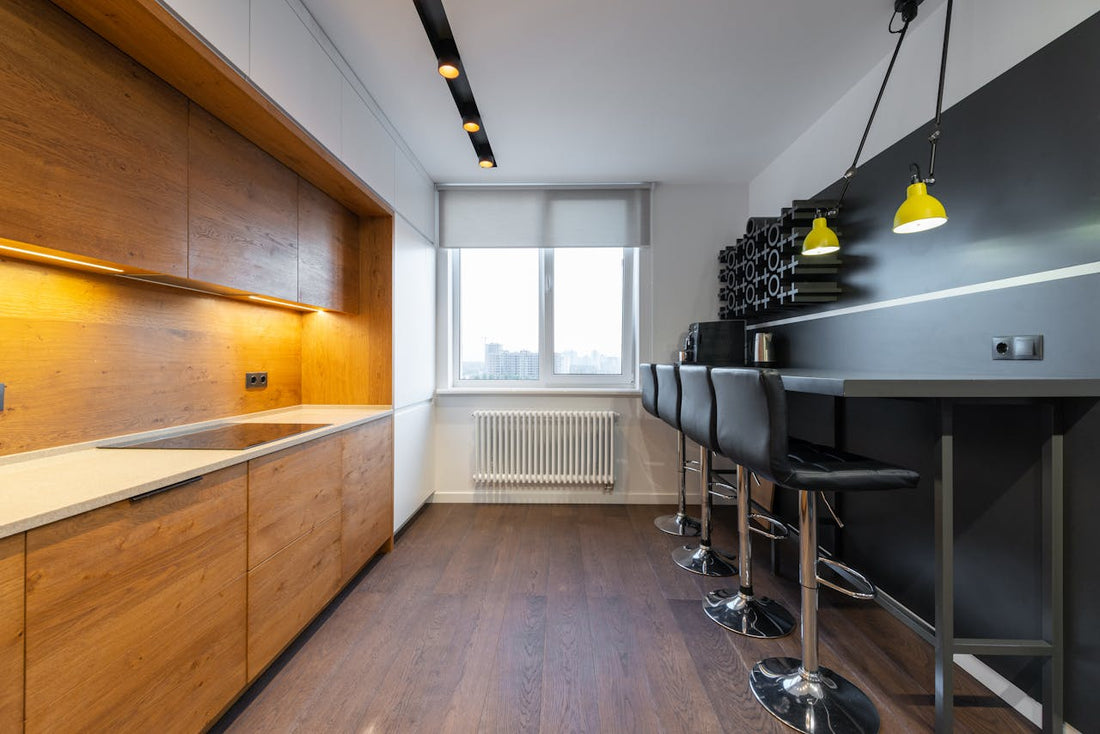When it comes to interior remodeling specifically changing the floors, a lot of emphasis is usually placed on the preparation. Whether you are placing your traditional wooden floor or more contemporary floor, the way you set the room up counts. So, let me explain the actions guiding a client in preparing the room for a perfect new floor.
Order FREE Laminate Samples
How Do I Prepare for New Flooring?
The process of preparing for new flooring therefore begin with emptying the area that will be covered with the new floor. This means, you should bring all your furniture, rugs and other appliances away from the floor to ensure that there is no any obstruction. If you are moving a lot of items around, you may find it useful to hire a storage space to temporarily put their items while the moving process is in progress.
When everything is cleared, look carefully at all trim fillings especially the skirting board and the baseboard. They may need to be removed or some arrangement made in relation to them depending with the kind of floor being laid down. For instance, when laying, let’s say, the hardwood floors, one might need to raise the skirting boards and fix them again after the floor is in place, to achieve the correct expansion gap.
Now, check the subfloor. This is just like the old floor and it should be clean, therefore, before you engage on any construction, make sure that the floor is dry, and it should also be in a level surface. If it has any debris or dirt then it must be vacuumed very clean. In case the subfloor is not flat then it will be advisable that before moving forward you should level the sub floor with levelling compound.
What Should I Lay Down Before Flooring?
Before you start laying your new floor, there are a few things you’ll need to put down first. These materials help create a solid base and ensure your flooring lasts longer.
Underlay: Many types of flooring, like wood and laminate, need underlay. This layer helps with sound insulation, comfort, and durability. Make sure you choose the right underlay for your floor type. Some rooms, like kitchens or bathrooms, might need moisture-resistant underlay to protect against dampness.
Moisture Barrier: If your room tends to get damp, especially in basements, a moisture barrier is a must. This will stop moisture from creeping into your floor, which could lead to problems like warping or buckling.
Primer or Adhesive (if needed): Depending on the flooring, you may need to apply a primer or adhesive. For example, with glued-down engineered wood, following the manufacturer’s instructions on this step will ensure everything sticks properly.
How Do You Start Flooring a Room?
Getting started on your floor installation is easier when you have a solid plan. The first step is to let your flooring materials acclimate to the room’s temperature and humidity. This is particularly important for wood floors, so leave the planks in the room for about 48 hours before you begin.
Next, lay out your planks before you start. You want to ensure your first row is perfectly straight, especially if you’re working with patterned or plank flooring. A good tip is to align your first row parallel to the longest wall in the room. This helps create a balanced look.
Having the right tools is also important. If you're doing the work yourself, you'll need a good saw for cutting, a rubber mallet to tap the planks into place, and a tapping block to protect the edges. A level and measuring tape will also help ensure everything is aligned properly.
How Do You Prepare a Floor for Flooring?
Preparing the subfloor is one of the most important parts of the process. If the floor beneath your new flooring isn’t ready, you could end up with an uneven, squeaky finish.
Clean Thoroughly: Start by sweeping and vacuuming the area to get rid of any dirt and debris. You can mop it too to make sure the surface is completely clean.
Level the Surface: An uneven floor can cause your new flooring to crack or shift. Use a spirit level to check for any dips or high spots. If necessary, fill in low areas with a levelling compound and smooth down any raised sections.
Moisture Check: Excess moisture can cause real problems, so it’s worth using a moisture meter to check the subfloor. If there’s too much moisture, take steps to fix the issue before installing your floor. A moisture barrier is an easy solution for preventing damp problems.
Secure Loose Boards: If you’ve got wooden subfloor boards, make sure none of them are loose. If any boards are squeaky or loose, nail them down properly to avoid future noise.
Remove Old Flooring (if needed): If you’re replacing existing flooring, be sure to remove it completely. This includes taking out old carpet, laminate, or even old nails and staples from previous installations. You’ll also want to scrape away any old adhesives.
Order FREE Laminate Samples
Preparing the room for new flooring need not be complicated as is demonstrated in this article. By doing some ground work you will be in a position to ensure the installation is seamless and successful. Regardless of whether it will be a wooden ground or some other type of flooring, the work that went into preparing for this type of endeavour will be worth it.
Welcome to the UK Flooring Depot where in you will be able to get all kinds of flooring in the highest quality coupled with guidance throughout the process. Visit our store for more and begin your flooring now!
Please, check if this works or if you would like to do some more modifications in it!





